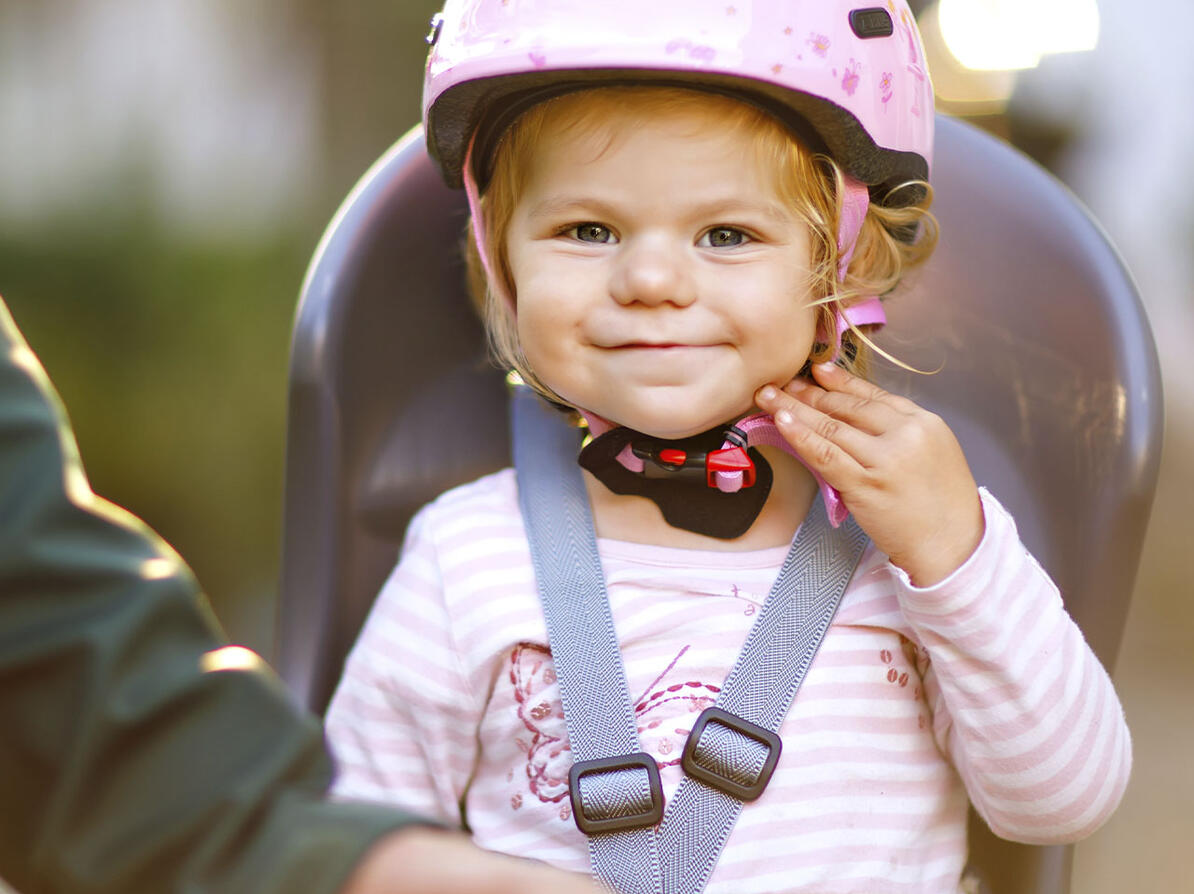Test: Children's bicycle seats are without unwanted chemicals
Bike seats for children are in most cases free of unwanted chemicals. However, a single bicycle seat in the test contained high amounts of PAHs that can be carcinogenic.

Child bike seats: Many products without unwanted chemicals
Children's bike seats are in most cases without unwanted chemicals like phthalates, PAH’s and flame retardants. This has been shown in a test of 14 bicycle seat from the Danish Consumer Council THINK Chemicals made in cooperation with the German consumer organization, Stiftung Warrentest.
Only the parts of the bike seat that the child will be in contact with are tested. It includes materials from e.g. the seat, armrest, padding and restrain. Both front- and rear-mounted seats were included in the test.
Bike seats from brands like Bobike and Polisport are some of the products that perform well in the chemical test. They are free of all the different problematic substances included in the test.
Unwanted chemicals: 1 child seat contains PAHs
A seat from Bellelli is the only bike seat in the test that has a higher content of unwanted chemicals.
This bicycle seat contains high amounts of substances known as PAHs (polycyclic aromatic hydrocarbons). This includes two PAHs that are classified in EU as possible carcinogens. PAHs can be present in the materials as contaminants.
The PAHs are not restricted, but they are problematic when present in a bicycle seat. This is a product that the child typically is in close contact with for a long time. Therefore, it is important to keep the concentration of these contaminants as low as possible in products intended for children.
About the test
-
How we tested
The Danish Consumer Council THINK Chemical and the German consumer organization Stiftung Warrentest bought 14 children bicycle seats and sent them for analysis at a chemical laboratory.
Both front- and rear-mounted seats were among the selected products.
The test examined the content of selected chemicals in the parts of the bicycle seat that the child is in contact with. This includes e.g. the seat, armrests, padding, restrains and buckles.
The substances included in the analysis are:
• PAHs (contaminants that can be carcinogenic)
• Phthalates (plasticizers that can have endocrine disrupting effects)
• Chlorinated paraffins (plasticizers and/or flame retardants that are of concern for the environment and suspected of being endocrine disruptors and carcinogenic)It was solely examined whether the substances were present in the different materials found on the bicycle seats. The test does not investigate to which extent the substances migrate from the products.
How we conduct tests in The Danish Consumer Council THINK Chemicals
What did we find?
The results from the test were:
• 9 bike seats are either completely free from unwanted chemicals or contain very small traces of PAHs. They obtained the best rating.
• 4 bike seats contained limited amounts of problematic chemicals in form of PAH’s. They have received the average rating.
• 1 bicycle seat contained higher amounts of PAHs including naphthalene and benzo [g, h, i] perylene. The EU classifies both substances as potential carcinogens. The substances are not restricted, but they are undesirable in products for children. This product received the lowest score.Phthalates:
None of the tested bike seats for children contained phthalates.
Several phthalates are restricted in toys and baby equipment such as strollers. Bicycle seats are not covered by the restriction.Chlorinated paraffins:
The test showed no content of chlorinated paraffins in the tested bicycle seats.
In the test, only so-called short-chain chlorinated paraffins were investigated.
Short and middle-chained chlorinated paraffins are on the Danish Environmental Protection Agency's List of unwanted substances (LOUS). They are problematic for the environment and are also suspected of being endocrine disruptors and carcinogenic.
The short-chain chlorinated paraffins are restricted in a wide range of products including bicycle seats.PAHs:
PAHs were detected in 7 out of the 14 bike seats tested.
In 2 cases it was very small traces and in 4 other child seats the content was still in the lower range.Only in one single seat the concentration was high and included both naphthalene in the padding of the seat and benzo [g, h, i] perylene in the seat plastic. Both substances are classified as potentially carcinogenic in EU.
PAHs are a group of substances, where some are or may be carcinogenic. Therefore they are unwanted in products for children.
The EU has a limit value for 8 selected PAHs in consumer products with which you are in prolonged skin contact. None of these 8 PAHs were present in the tested bicycle seats.
